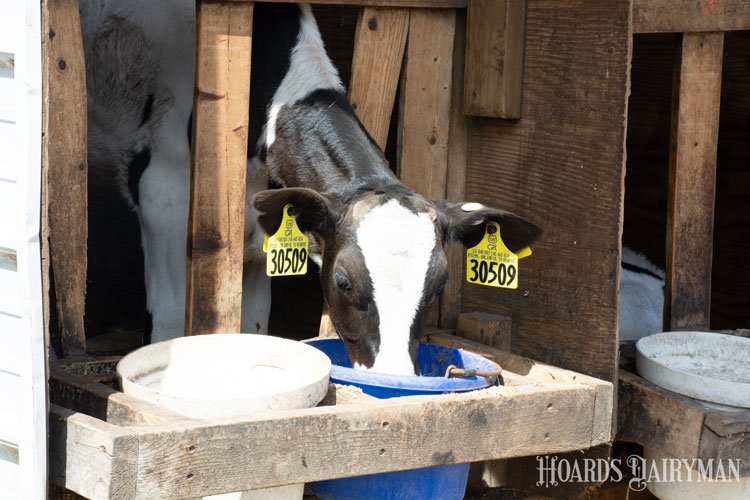
Transition phases in dairy cattle are essential for success. That begins all the way at the beginning of life. One of the first notable transitions in a dairy animal’s life is the one from drinking milk to consuming a grain and hay diet. In the controlled environment of most dairy farms, this occurs around 8 or 9 weeks of life.
The 2014 USDA National Animal Health Monitoring System (NAHMS) recorded 31.1% of farms weaning their calves at 9 weeks of age or later. Variation had 7.5% of farms weaning their calves at 5 weeks or younger. No matter what age calves are weaned, environment, nutrition, and development are all critical to a successful transition.
“When the decision is made to move calves into a new environment, be sure to limit the number of stressors,” suggested extension educator Cassie Yost in a Penn State Extension article. “Do not make an environment change, a timed vaccination, and a nutritional change all at once.”
The dairy extension educator reminded readers that a stressed calf is at higher risk for health incidents. “A stressed calf with an underdeveloped rumen can lead to disasters in your weaning groups. Limiting stress and allowing that calf to slowly adjust to changes can be the difference in the success of your weaning program,” she elaborated.
Balancing on the tightrope
The nutritional needs of these young calves remain high while they move from milk to a grain and hay-based diet. As farms navigate this tightrope between serving enough milk and encouraging adequate grain intake means a gradual process. Yost recommends a step-down method.
“The most common example would be with farms feeding milk two times per day then cut back to one feeding for a full week before stopping milk feeding altogether,” she detailed. “Whatever your feeding program, it is important to decrease the amount of milk being fed so calves can learn to fill this new void with the starter grain that is available.”
Grain intake is so critical because of the role that it plays in rumen development. “A calf needs to consume at least half a pound of grain per day for 21 to 28 days to grow a suitable level of rumen papillae,” Yost explained.
Inadequate rumen development has been closely linked by research to difficulty handling the nutritional changes of weaning. Remember calf starter should be clean of any dustiness or mold. It should be palatable and appealing to the calf.








